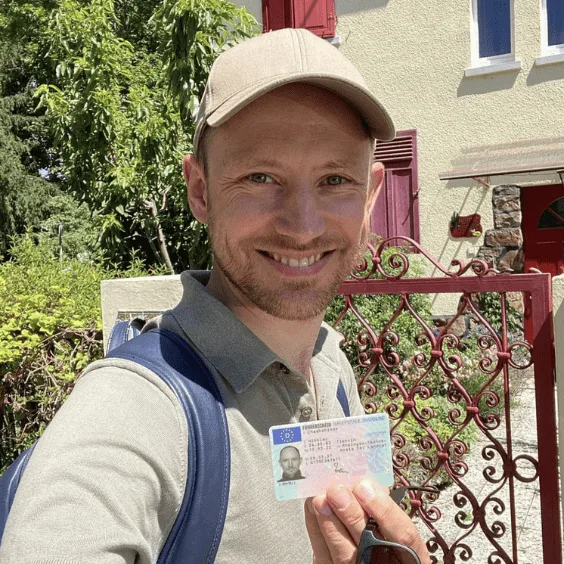Navigating the Process of Obtaining a German Driving License
For individuals residing in or planning to relocate to Germany, obtaining a German driving license is a vital action towards greater movement and self-reliance. Whether you are a migrant, a trainee, or a traveler, understanding the procedure can conserve you time, cash, and tension. This detailed guide intends to offer a comprehensive introduction of the actions associated with obtaining a German driving license, together with some often asked questions and helpful tips.
Introduction of the German Driving License System
Germany has a well-structured and rigorous system for issuing driving licenses. The procedure can vary depending upon your present driving status and the type of license you are looking for. Normally, there are 2 main classifications of applicants:
- New Drivers: Those who have never held a driving license and are obtaining the very first time.
- Foreign License Holders: Individuals who currently hold a valid driving license from another country and desire to transform it to a German license.
Steps for New Drivers
For new drivers, the process of obtaining a German driving license includes a number of phases:
Theoretical Examination (Theorieprüfung)
- Preparation: Attend a driving theory course, which normally consists of 14 lessons. These lessons cover traffic rules, roadway signs, and safe driving practices.
- Exam: Pass a multiple-choice exam including 30 questions. You should address a minimum of 25 concerns correctly to pass.
Practical Training (Fahrausbildung)
- Lessons: Complete a minimum variety of driving lessons, which can vary based upon the type of license you are requesting. For a standard car (B classification), you typically need at least 12 lessons.
- Emergency Treatment Course: Attend a first help course, which is necessary and normally takes about 8 hours.
Practical Examination (Fahrschulprüfung)
- Exam: Pass a useful driving test, which includes a pre-test inspection, a driving test, and a post-test conversation. The test is carried out by a certified inspector and generally lasts about 30-45 minutes.
Issuance of the License
- Application: Once you have actually passed both the theoretical and useful exams, you can look for your German driving license. The application is typically processed through the local driving license workplace (Führerscheinstelle).
Steps for Foreign License Holders
If you already hold a valid driving license from another nation, the procedure of obtaining a German driving license can be more uncomplicated, depending upon the country of origin:
EU/EEA and Swiss License Holders
- Exchange: You can exchange your existing license for a German one without taking any additional tests. However, you need to request the exchange within 6 months of moving to Germany.
- Requirements: Provide your present driving license, a valid passport or ID card, and a finished application.
Non-EU/EEA License Holders
- Acknowledgment: Some countries have reciprocal arrangements with Germany, enabling you to exchange your license without extra tests. Inspect the list of acknowledged countries on the German Federal Ministry of Transport and Digital Infrastructure website.
- Tests: If your country is not on the list, you might require to take both the theoretical and useful exams. führerschein kaufen ohne vorkasse is comparable to that of brand-new drivers, as described above.
Beneficial Tips and Considerations
- Language: The theoretical and practical tests are conducted in German. If you are not proficient in German, you might need to take a language course or find an authorized translation service.
- Expenses: The costs for the theory course, useful lessons, and tests can vary. Budget approximately EUR500-EUR1000 for the entire process.
- Waiting Times: Be prepared for potential waiting times for both the theory and useful exams, especially in bigger cities.
- Practice: Regular practice is crucial for passing the useful exam. Think about extra session with a driving trainer or on your own, if allowed.
Frequently Asked Questions (FAQs)
Q: Can I drive in Germany with a foreign driving license?
- A: Yes, you can drive in Germany with a legitimate foreign driving license for as much as 6 months after transferring to the nation. After that, you will need to acquire a German driving license.
Q: How long does the entire procedure take?
- A: The process can take several months, depending upon your accessibility for courses and examinations, as well as the waiting times at the driving school and the Führerscheinstelle.
Q: Can I take the examinations in a language other than German?
- A: The exams are performed in German. However, you can use an authorized translation service to assist you understand the questions and instructions.
Q: What if I stop working the exams?
- A: If you fail either the theoretical or useful exam, you can retake it after a specific waiting period, which is usually a few weeks. You might need to participate in additional courses or session before retaking the exam.
Q: Are there any age restrictions for getting a German driving license?
- A: Yes, you need to be at least 18 years old to obtain a standard car driving license (B category). For other categories, such as motorcycles or trucks, the age requirements might vary.
Acquiring a German driving license is a significant step for anyone living in Germany, using higher liberty and access to different parts of the country. While the process can be rigorous, it is developed to ensure that drivers are well-prepared and well-informed about German traffic laws and safe driving practices. By following the actions described in this guide and preparing thoroughly, you can successfully browse the procedure and take pleasure in the advantages of driving in Germany.
Whether you are a new driver or a foreign license holder, the secret to success is persistence, preparation, and a commitment to knowing. All the best on your journey to obtaining a German driving license!

